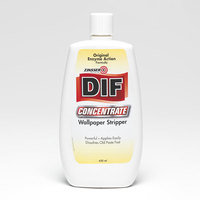Can I paint over wallpaper or should I strip it?
Best results are always achieved by removing the old wallpaper back to the original wall surface and thoroughly preparing that surface for painting. But saying that, in many cases there is a reason as to why the walls have been papered in the first place. In older buildings, where the surface walls are in poor condition, a patterned or embossed wallpaper can hide a multitude of sins.
Where a wall surface is in bad condition, a matt finished busy patterned wall paper will disguise very well the unevenness, lumps, bumps and cracks of the walls. When the wallpaper is painted with a uniform colour, the true condition of the surface will be revealed, especially if an eggshell finish is required. If you are confident that the wall surface is in good condition, the seams are not overlapped and generally all the paper is well stuck down, you may have a case to go ahead with painting over the wallpaper. The wallpaper has to go!
Ok, we have made the decision that the wallpaper has to go. Now the fun begins.
How long will my room take to strip? This will all depend on the type of wallpaper, whether it has been previously painted or not, with what type of paint it was painted with, and, what type of surface is below the wallpaper. All these factors will determine the speed of which the paper can be removed. Do I use a wallpaper steamer, home made remedies or wall paper stripping products? There are many wallpaper removal products on the market. If you would like to use a manufactured product, I would recommend DIF Liquid WallPaper stripper. This is a patented enzyme wall paper stripper that has a superior and more effective blend of wetting agents. These agents speeds up the penetration and soaking process and also the re-solubilisation of the paste. The product is available in concentrated solutions of 650ml, 1ltr and 2.5ltr containers. A 2.5ltr container will make up to 30 litres of solution. When it comes to using wallpaper steamers, yes they are very efficient but one has to be concious not to damage the surface below. On older properties, where the plaster has dried out over the years and become porous, the steam will penetrate the plastered walls and blow the plaster from the brickwork. This will result in having to re-plaster large sections of walls. If the wallpaper was applied directly to a non primed dry lined wall, a wallpaper steamer will damage the paper surface of the plaster board. 
Painters in Central London's method, which has proved very successful over the years is a solution of sugar soap and hot water. The key is to be patient !!! ... and to let the water solution do all the hard work. If you end up scraping dry paper underneath then you haven't soaked it enough and waited sufficient time. The stripping of wallpaper can be very satisfying and therapeutic and often there is an urge to get stuck in too early. Be patient.... good things come to those who wait. Types of wall paper and their removal process
Traditional wallpaper is porous and uncoated. These papers absorb water and any type of manufactured wallpaper remover, therefore these types of papers are the easiest to remove. Apply a good soaking to the paper and then wait for a short period of time for the water to penetrate. The time will vary depending on the porosity of the paper. It is then advisable to apply a second soaking, wait again for it to soak in and then your patience will have paid off.
Coated wallpapers tend to be wipeable and therefore difficult for the water to penetrate through the vinyl or acrylic surface coating. You will therefore need to thoroughly score the surface prior to soaking the paper. Soak the paper as with traditional papers and be patient for the soaking process to work. Vinly wallpapers are generally manufactured with a surface vinyl covering and a backing paper. Most vinyl papers can be peeled away from the backing paper leaving it intact with the wall surface. The backing paper can then be removed as in the same method of removing a traditional wallpaper. Painted wallpaper removal is similar to removing coated wallpapers but generally the surface is a lot harder and more difficult to score especially if coated with a gloss paint on an embossed wallpaper. Make sure the surface is thoroughly scored and again follow the two time soaking method. Multiple layers of wallpaper need time and patience. Generally each layer will need to be addressed individually, scoring and soaking as you go. If you have several layers of traditional wallpaper, with a good soaking of the paper, three or four times, multiple layers can be removed in one go. Again, let the water and sugar soap solution do their work first. Painting walls that have been stripped of wallpaper
The biggest obstacle for anyone decorating a wall that has been stripped of wallpaper is dealing with the adhesive that is left on the wall surface. Generally the paste will need to be softened and removed by washing it down and removing it with a wide scraping blade. If you apply an emulsion to the wall containing adhesive, the paint will soften the adhesive and you will find yourself painting on a sticky surface.
Painters in Central London
|
Andrew GARDPainter Decorator based in Soho Central London Archives
December 2019
Categories
All
|
Get in touch
Telephone |
HoursMon-Sun : 7am - 9pm
|
Painters in Central London Andrew GARD -
21, St James Residences, Brewer St, London W1F 0RN
|
© Copyright 2024 Painters in central London All Rights Reserved
Associated websites: GaleriaAmaya.com
Associated websites: GaleriaAmaya.com

 RSS Feed
RSS Feed
